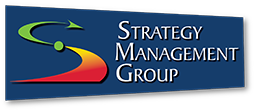
The Post-Retreat Strategic Planning Letdown
 This type of letdown is common to any major achievement or milestone in life. So it’s not unexpected that a similar phenomenon occurs in the strategic management world. Most commonly, this letdown occurs as soon as the big planning retreat event is over and the resulting documentation has been put together. Once the strategy team has formulated strategy, developed a strategy map, identified performance measures, prioritized initiatives, and rolled everything out to the entire organization, the team stands at the top of that mountain of work and thinks we did it, now what?
Unfortunately, this is the point that too many organizations realize that the real work was not in writing the plan but in the execution of all of those grand ideas. They let the process run out of steam and begin getting too distracted by day-to-day problems and operational concerns to follow through.
So how do you avoid the post-retreat strategic planning letdown? Here are a few tips:
This type of letdown is common to any major achievement or milestone in life. So it’s not unexpected that a similar phenomenon occurs in the strategic management world. Most commonly, this letdown occurs as soon as the big planning retreat event is over and the resulting documentation has been put together. Once the strategy team has formulated strategy, developed a strategy map, identified performance measures, prioritized initiatives, and rolled everything out to the entire organization, the team stands at the top of that mountain of work and thinks we did it, now what?
Unfortunately, this is the point that too many organizations realize that the real work was not in writing the plan but in the execution of all of those grand ideas. They let the process run out of steam and begin getting too distracted by day-to-day problems and operational concerns to follow through.
So how do you avoid the post-retreat strategic planning letdown? Here are a few tips:
- Don’t think of strategy as an event: Many people still think that the only time you should talk about strategy is after playing golf during a big retreat. Strategy management is about making strategy a part of day-to-day management. Try to institutionalize the strategic thinking process that was used to develop the plan. Make strategy everybody’s job instead of just the management team. Incorporate strategy into the day-to-day agenda.
- Prioritize & keep things simple: No organization can do everything for everyone. Select 3-4 high level goals to focus on to start and a few high-priority initiatives to support each goal. Manage your initiative list down to get to the select few.
- Focus on process improvement instead of judging people: ownership and accountability are needed, but if you want to develop a continuous improvement culture, employees cannot worry about getting punished every time they report bad news. Underperformance is more often than not the result of a process failure and so that’s where the focus should be.
- Use technology for analysis and information sharing: Some organizations fail to fully analyze the data they are collecting or short-circuit their strategy execution success by choosing to use spreadsheets for performance analysis. Remember that it isn’t helpful for a single analyst to fully understand how the organization is performing. Information sharing and dialog are critical in helping turn information into knowledge and understanding so that leaders can make better strategic decisions.

PS: Our Balanced Scorecard Saved The U.S. Army $26 Million
 Ft. Sam Houston this week and had invited a special guest – Scott Hencshel – to address the group regarding the organizational challenges of implementing a balanced scorecard system within Army. (Scott’s command is also stationed at Ft. Sam Houston – Army Medical Department Center & School (AMEDDC&S), an Institute “Award for Excellence” winner.)
As Scott was wrapping up, someone asked a final question, “What was the biggest benefit that AMEDDC&S realized after implementing its strategic balanced scorecard?” Scott talked about alignment, focus, and data-driven decision making. Then as he was making his way to the door he turned back and said, “Oh yeah, we immediately saved the Army $26 million.”
Say what?!?!
AMEDDC&S is where the U.S. Army educates and trains all of its medical personnel – over 27,000 soldiers. One of the strategic measures on AMEDD’s balanced scorecard is “attrition rates.” Before the scorecard was implemented, it was commonly believed that discipline issues were the primary reason for soldiers not completing their training programs – because resolution of these discipline issues were what consumed everyone’s time. Once the scorecard was implemented, attrition was measured more thoroughly and two discoveries were made:
Ft. Sam Houston this week and had invited a special guest – Scott Hencshel – to address the group regarding the organizational challenges of implementing a balanced scorecard system within Army. (Scott’s command is also stationed at Ft. Sam Houston – Army Medical Department Center & School (AMEDDC&S), an Institute “Award for Excellence” winner.)
As Scott was wrapping up, someone asked a final question, “What was the biggest benefit that AMEDDC&S realized after implementing its strategic balanced scorecard?” Scott talked about alignment, focus, and data-driven decision making. Then as he was making his way to the door he turned back and said, “Oh yeah, we immediately saved the Army $26 million.”
Say what?!?!
AMEDDC&S is where the U.S. Army educates and trains all of its medical personnel – over 27,000 soldiers. One of the strategic measures on AMEDD’s balanced scorecard is “attrition rates.” Before the scorecard was implemented, it was commonly believed that discipline issues were the primary reason for soldiers not completing their training programs – because resolution of these discipline issues were what consumed everyone’s time. Once the scorecard was implemented, attrition was measured more thoroughly and two discoveries were made:
- Attrition was MUCH higher than originally thought. The traditional calculation was flawed and attrition was actually over 34%. That means 1/3 of those entering the medical training programs would “drop-out” thereby wasting the Army’s investment in their training.
- Academic performance, not discipline, was discovered to be the primary reason for attrition.

Navigating with the Fuel Indicator
Has it ever dawned on you that you think you are headed in the right direction only to discover that you are using the wrong measure to inform your decisions? It feels a bit like navigating a truck using the fuel gauge instead of the GPS.
 It was a lesson that I observed again last week while presenting at the McLeod Software Users’ Conference in Scottsdale, AZ. Between a golf tournament in the 106 degree heat, a bus ride for 600 participants for a night at the Rawhide Western Town and Steakhouse, desert Jeep tours and lots of great food and speakers, the software company put on a great show.
It was a lesson that I observed again last week while presenting at the McLeod Software Users’ Conference in Scottsdale, AZ. Between a golf tournament in the 106 degree heat, a bus ride for 600 participants for a night at the Rawhide Western Town and Steakhouse, desert Jeep tours and lots of great food and speakers, the software company put on a great show.
The part that was most exciting to me was the official launch of the new Navigator product, which is the new strategic performance management solution that McLeod has added to its portfolio of transportation management and trucking software solutions.
The highlight of the conference was a presentation by Lee Camden, the IT Director at Earl Henderson Trucking. Henderson was the first client for which McLeod and the Institute partnered together to help with strategic planning and measurement development. I facilitated the Henderson team quickly through our planning process and the McLeod team modeled the software after the results. In his presentation, Lee demonstrated the value of the Navigator product as well as the practical benefits they have received over time from improved strategy focus. He demonstrated how they used their strategy map to visualize and align around strategy.
He also noted how they had stopped focusing on only driver retention as their primary organizational capacity measure. A key takeaway from the planning dialog was the realization that their strategy wasn’t dependent on having just anyonedriving their trucks. Simply having a driver turned out to be about as strategic as filling the gas tank.
Henderson’s strategy focused on adding specialized offerings and other premium services. In order to effectively deliver the services that they felt gave them a competitive advantage, it was critical that they have qualified “good” drivers. In order to improve on the Increase the Number of Good Drivers objective on their strategy map, McLeod has implemented an initiative around this qualification process and are now measuring their progress on this much more strategically important factor.
Bringing Innovation Down to Earth

Balanced Scorecard Gone Bad – What’s that Funky Smell?
I had a distressing phone conversation earlier this week. A former client called to say they were at a decision-point. They were trying to decide if they wanted to keep using their balanced scorecard system or not. He went on to say, “to be quite honest, the scorecard really isn’t driving the organization. It feels more like ‘busy work’…it leaves a bad taste in our mouths.” 
“In fact,” he continued, “our project management discipline is clearly what is strategically guiding the organization while the balanced scorecard feels like an anchor weighing us down. It used to be what propelled us forward and kept everyone in alignment. Maybe if we cascade the scorecard, this will help?” I was perplexed. While I’ve diagnosed the root cause and prescribed the solutions for a lot of “broken” scorecard systems, this was the first time I’d heard of project management being “more strategic” than the strategic management system that drives it.
The next day, I joined the client executive team on a web conference. We walked through an overview of an integrated scorecard system – reviewing the 14 components of a fully integrated system. As we talked, some of the team members began remembering back to when they built the original scorecard and recalled how the underlying strategic elements were built – how they brought in board members and stakeholders to inform and set strategic direction. But most importantly, they began to remember when it was built.
This client is a healthcare organization and they built their original scorecard during the last presidential election cycle – at a time when there was political uncertainty. The environment was so uncertain that one of their strategic themes was “Readiness for Public Policy Changes” which meant that their resultant strategic scorecard was designed to prepare them for whichever way the political winds eventually blew. And that scorecard was appropriate for the times.
But their environment has since changed…significantly! In the past year or so, the Affordable Care Act now drives all action and projects at this organization. This massive shift in their strategic environment happened to coincide with the implementation of a robust project management system in which the portfolio is aligned to the tenants of Triple Aim. That’s when the room went silent. As I strained to hear across the phone line, I began to hear murmurs as one after another team member came to the same diagnosis. Their environment had changed and they had shifted strategic directions without updating their strategy / strategic balanced scorecard. Their strategic scorecard was outdated….expired! Their sense that their old scorecard was anchoring them in the past and was at odds with the new implied direction of the organization was absolutely correct.
They had stumbled into the classic “Set It and Forget It” mistake. Their project management discipline (which is critical to strategy execution) appeared to be “more strategic” because it was more aligned with their true strategy than was the rest of their strategic management system. Due to some key team member turnover, they had forgotten their entire system needs to go through a regular strategic evaluation cycle! Scorecards do not have indefinites shelf lives….they are dynamic systems designed to allow an organization to shift directions, as needed. The team is now in the process of updating their entire strategic management system to reflect their current reality. And as part of this update process, they will ensure that their current strategic direction is chosen, not implied. Only then can they be sure that their current portfolio of projects is truly aligned for maximum strategic impact.
Does your scorecard have a funky smell? For more examples of Scorecard Challenges and Solutions, we invite you to read “The Institute Way: Simply Strategic Planning & Management with the Balanced Scorecard.”
We also invite you to join the conversation at our Linked In group: www.theInstitutePress.com/group

